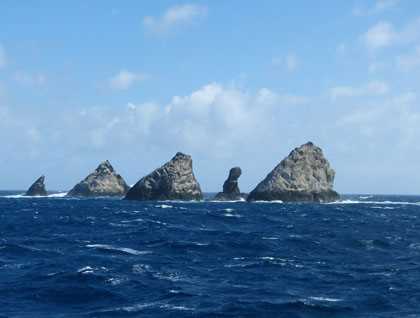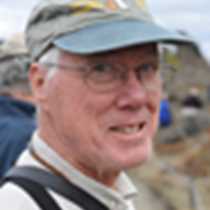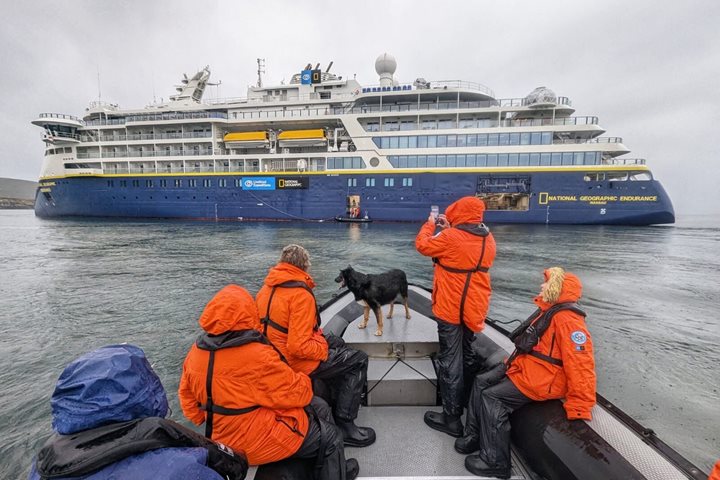When most of us who are now travelling aboard the National Geographic Explorer studied geography in school, we learned of the world's oceans: Atlantic, Pacific, Indian, and Arctic, and of her seas: Mediterranean, Tasman and Bering, Yellow, Red, Black, and White... One that was not mentioned was the Southern Ocean. Only recently ("recent" defined as "since we went to school") has the Southern Ocean been recognized for the qualities that set it apart from the other oceans. We now see how the major current systems of the ocean are all connected through the Southern Ocean. Deep ocean currents coming slowly down from the north rise up at the Antarctic Divergence, bringing cold, nutrient-rich water to the surface where there is sunlight. Light plus nutrients yields productivity, so the oceanography is responsible for the great abundance of seabirds that have enthralled us on our crossing from the Falkland Islands to the Antarctic oasis of South Georgia Island.
Ocean productivity fuels the birds, and the winds provide the motive force as they soar, seemingly without effort, over the waves. Why do the birds follow our ship, crossing from side to side in our wake, falling behind and then soaring rapidly to overtake us, only to fall behind again? Is it because they think we are a fishing vessel that will drop waste for their taking? I think not (but who knows what a bird "thinks"?). Perhaps they are exploiting the gradients in wind speed that our passage creates, playing in the air currents. Perhaps our churning propellers release a "scent plume" of volatile compounds that their keen olfaction mistakes for a hotspot of ocean productivity. On an ocean crossing such as this we have time to ponder, between visits to the lounge for informative presentations and sessions on the deck to photograph these magnificent birds of the ocean winds.
This afternoon we passed Shag Rocks, the only landmark that rises above the ocean on our crossing to South Georgia. It is a remnant of the volcanic activity that created this island arc, left behind as Africa was ripped away from South America in the breakup of the southern megacontinent that we now call Gondwana. Here shags (aka Antarctic cormorants) return to roost each evening. Evidence of generations of shags paints the rocks a distinctive shade of guano-white. Perhaps lines of shags returning to South Georgia each evening assisted Ernest Shackleton's navigator, Frank Worsely, in finding South Georgia as their epic boat journey neared its completion in May, 1916, but that is another story.







